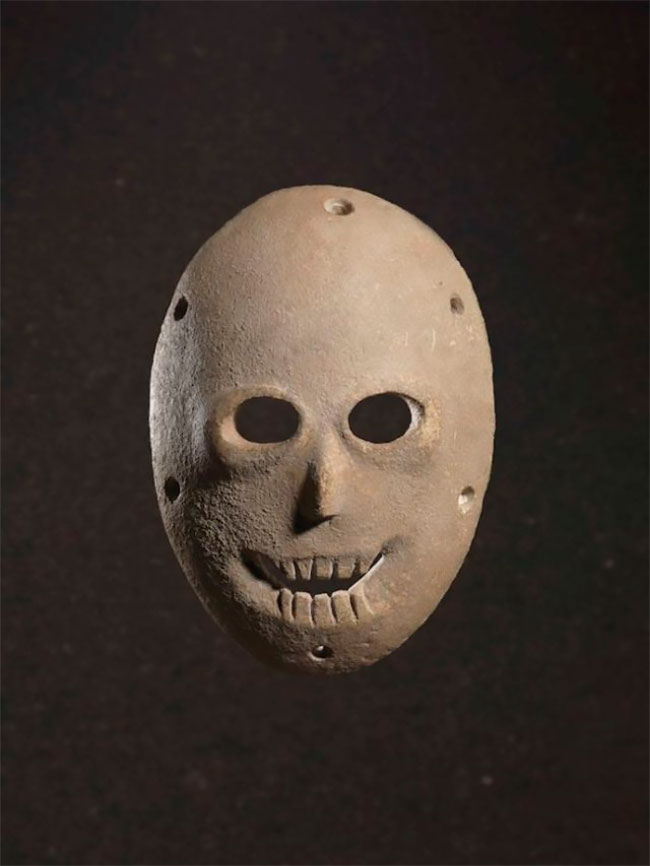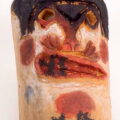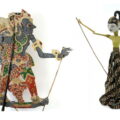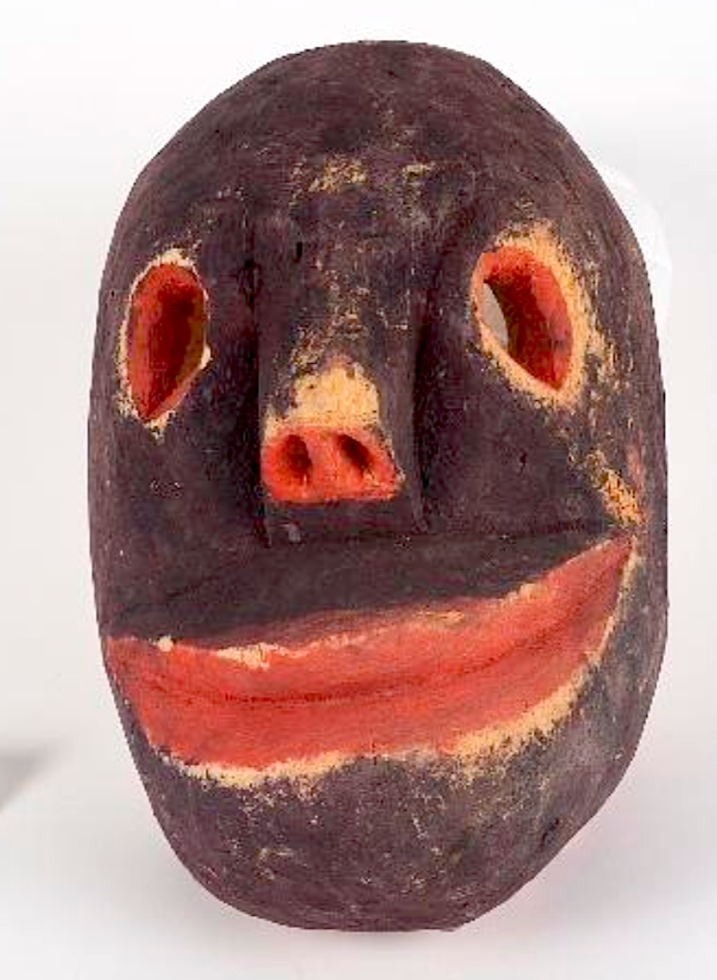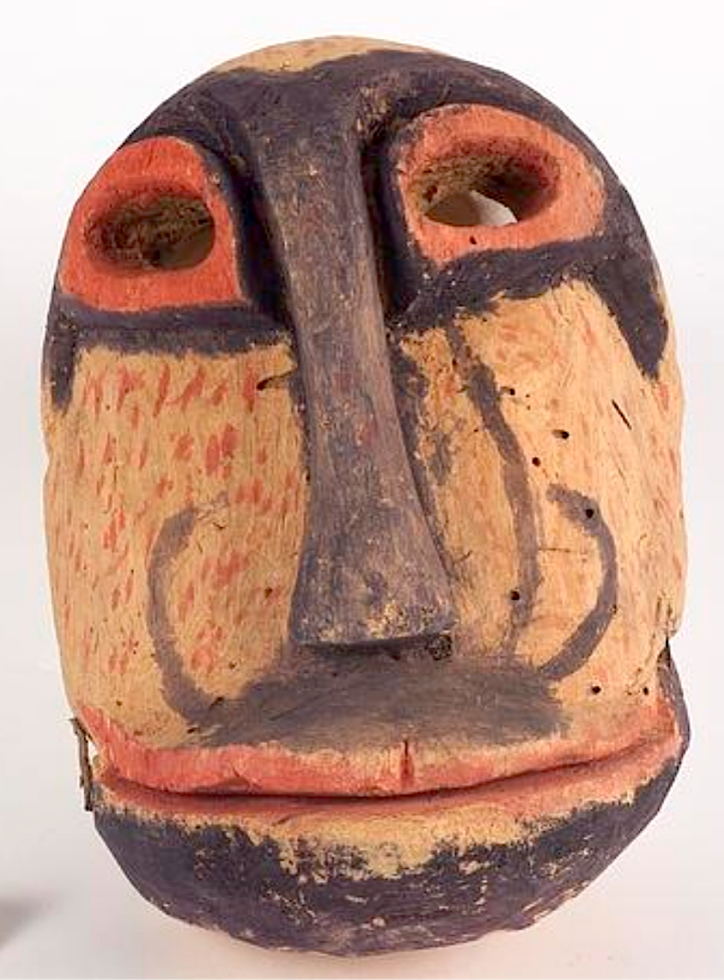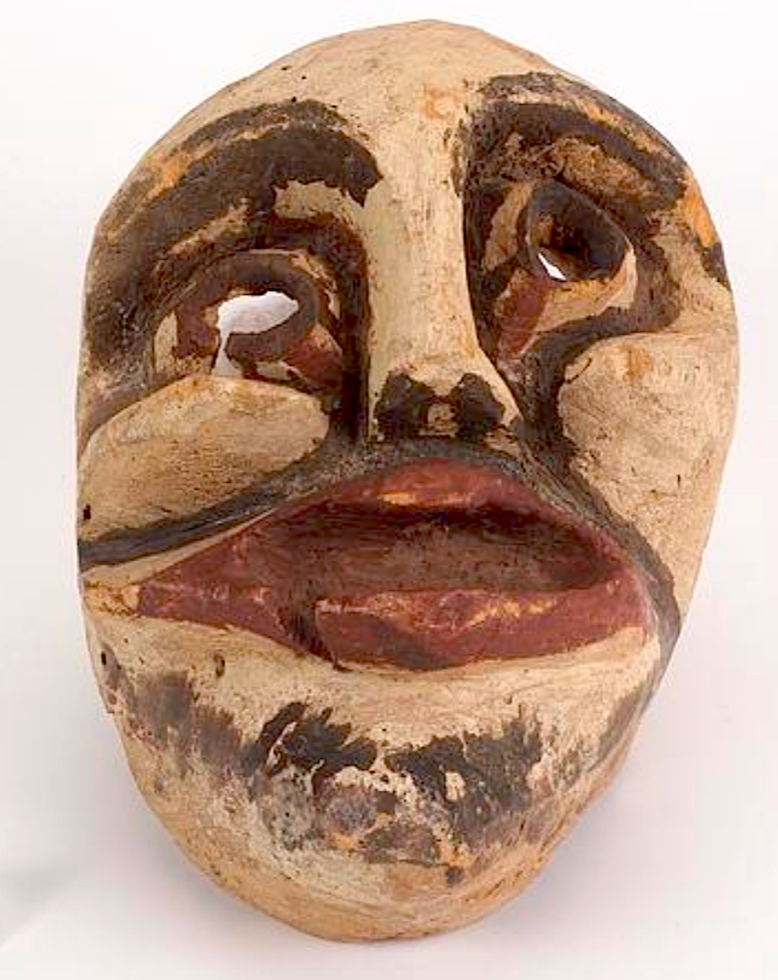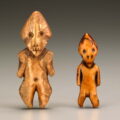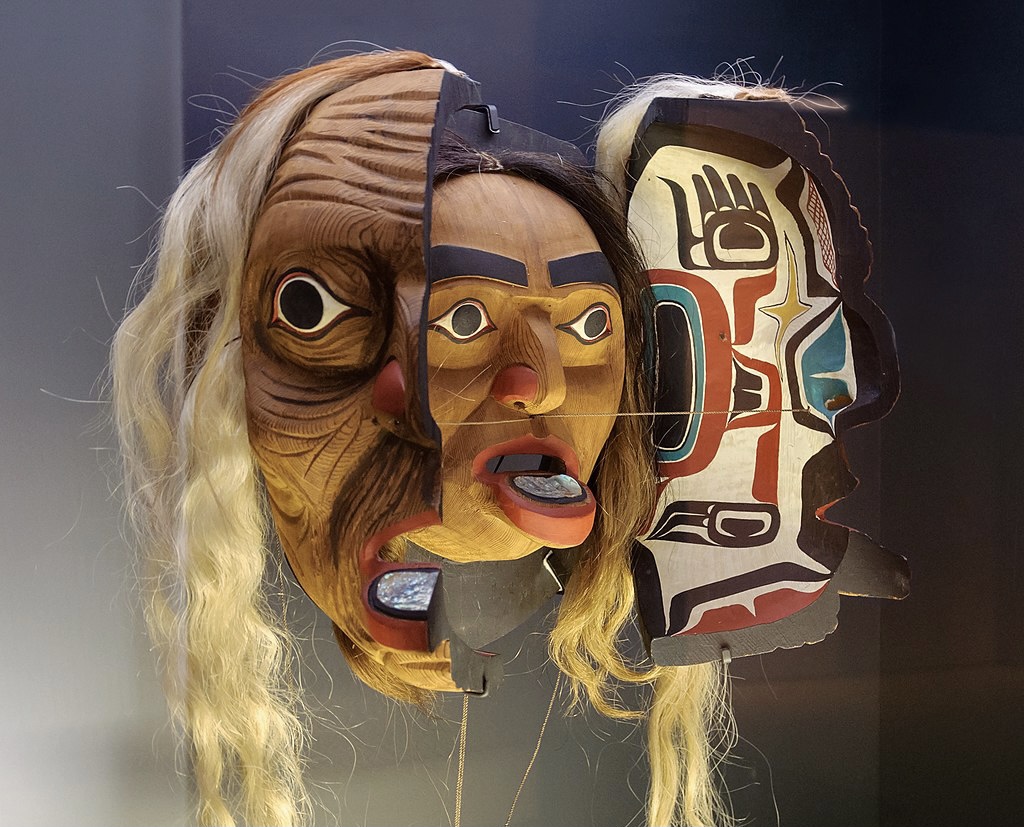
Kwakwaka’wakw transformation masks are worn by dancers to display their status during potlatch ceremonies, where they give gifts to attendees. When a cord on the mask is pulled, its inner form is revealed, often changing from an animal into a mythological creature or ancestor. Photo: Myrabella



